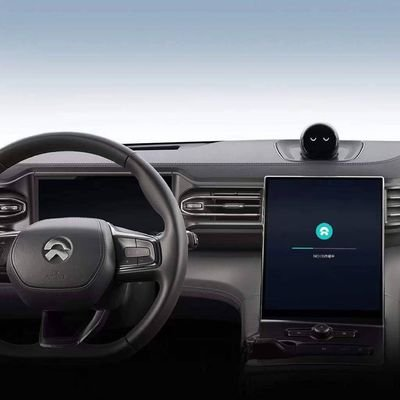On December 28th, 2019, NIO Day was held as scheduled at the Shenzhen Bay Sports Center. At this year’s NIO Day, NIO officially released a 100 kWh battery, the EC6 – NIO’s third model, and the all-new ES8.
This year’s NIO Day was a bit different from previous years. The venue was half the size of that of last year, and the lineup for the concert was smaller. All pickup activities were also handed over to the users.
However, the enthusiasm of the users, and the user-centered thinking of NIO, remained unchanged.
This year’s NIO Day even featured a user performance session. Users were not shy and performed “Self-cultivation for Electric Vehicle Owners” for all friends who care about NIO.
Although I am reluctant to repeat this sentence, it is the current reality that 2020 is the most difficult and crucial year for NIO.
NIO has been established for five years, and NIO’s first mass-produced car, the ES8, has been released for three years. NIO has achieved a lot during these three years, but there is still an enduring issue – financing.
In the cold winter of the automotive market, new automakers are not favored, and the difficulty of financing is increasing. For NIO, relying excessively on external financing is not sustainable, so there is a need to enter a state of self-sufficiency as soon as possible.
Clearly, NIO’s current sales are insufficient to support itself. Therefore, what was announced at this-year’s NIO Day is crucial for bringing in incremental revenue. Moreover, such an opportunity only comes once a year.
NIO played three big cards this time.
100 kWh interchangeable battery, significant improvement in NIO’s range across all models
The first card was a brand new battery pack with a battery capacity of 100 kWh, which also supports battery swapping.
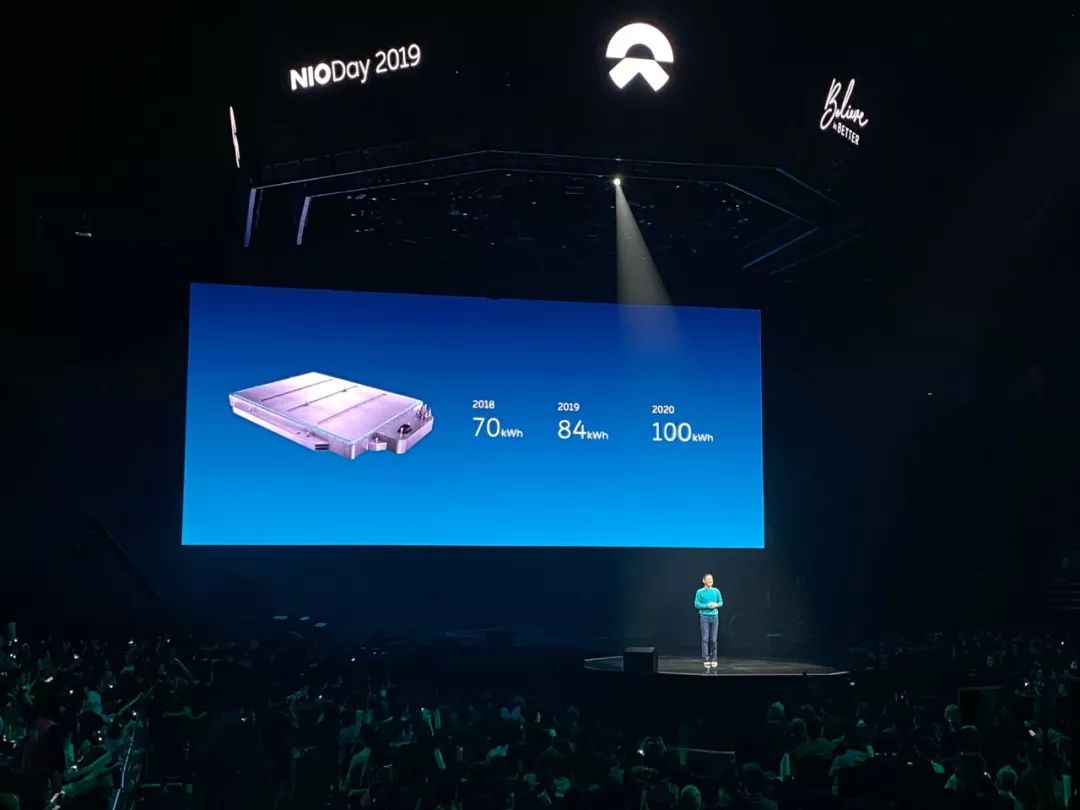
With the release of the 100 kWh battery, the battery capacity of all NIO models will match that of the Tesla Model S/X, which are currently the cars with the largest battery capacity on the market.
After the installation of the large battery, the NEDC range of the NIO ES6 has exceeded 600 km, and the ES8 has reached a NEDC range of 500 km.
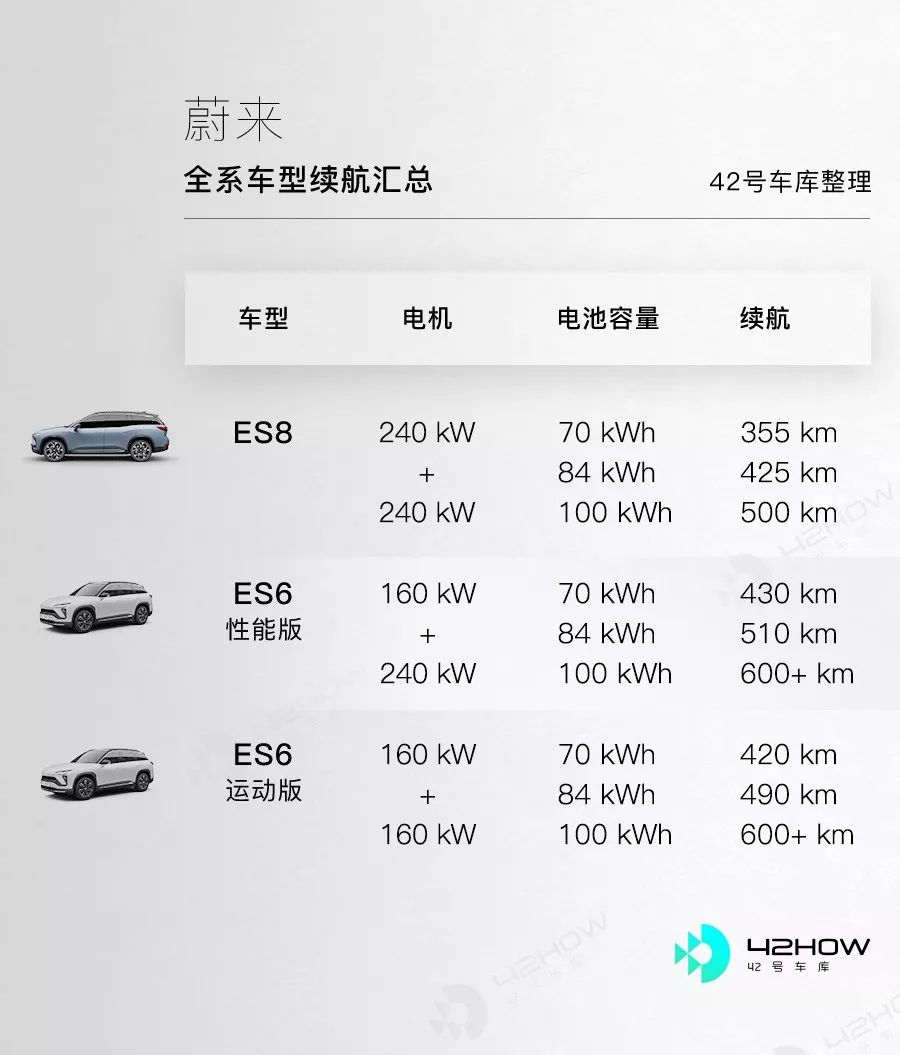
Range is always the most critical indicator when consumers buy electric vehicles.Two years ago, NIO hoped to alleviate range anxiety for consumers through a complete, supplementary energy system consisting of one-click charging service, mobile charging cars, and battery swapping stations. However, when the single-charge range of the vehicle could not meet users’ needs, the source of the anxiety still rested with the vehicle itself.
After the release of the ES8, market feedback alerted NIO to this problem, so the company began to exert more effort in power battery development.
From NIO Day this year, where batteries were the first item to be released, NIO has already placed range capability as its top priority.
Last year’s release of the 84kWh battery pack filled NIO’s shortcomings in range, catching up with models of the same level, and this year’s NEDC range of 600+ km has made the ES8 and ES6 leading models rather than following them.
Compared with other models with a NEDC range of 600+ km, NIO has an additional advantage: battery swapping.
I have spoken with my friends about this issue now that I have heard that NIO is about to launch a 100 kWh battery pack, and we believe that NIO models equipped with a 100kWh battery pack will not support battery swapping.
In the existing battery compartment, it would be almost impossible to increase battery capacity by almost 20%, since the 84kWh battery pack has already reached an energy density of 170 Wh/kg.
It’s a relief to find out that we were wrong.
The 100 kWh battery pack can still be swapped, what does this mean?
It means that all NIO models can be retrofitted, even the ES8 models introduced in 2018 can be upgraded by selection. Older models will not be updated with the iterations of battery technology and quickly become outdated in the market.
It means that vehicle owners who do not choose the large battery pack can still be satisfied with their long travels through leasing when they need to travel long distances.
It also means that when traveling long distances, they can quickly get 400+ km of range through a battery swapping station at the service area.
So the question is, how much does it cost to upgrade to the 100kWh battery pack?
Upgrading from 70 kWh to 100 kWh only costs CNY 58,000!!!
Owners who place bookmarks at SJTU* before March 31, 2019, can still enjoy a 40% discount.
That is to say, for only CNY 416,000 (pre-subsidy), you can buy an ES6 with a NEDC range exceeding 600 km. At present, the pre-subsidy price of the long-range four-wheel-drive version of the Model Y is CNY 488,000. When the Model Y enters the domestic market, it will inevitably compete head-to-head with the ES6, and in terms of price, the ES6 has already taken a significant advantage.
So, is it attractive? But new batteries still face two problems.
Charge speedCurrently, the maximum charging current of mainstream charging piles is only 250 A, and for most 400 V platform models on the market, the peak charging power can only reach about 90 kW. This is obviously not efficient for a large battery of 100 kWh with a charging rate of only 0.9 C.
Yesterday, Tesla’s 250 kW V3 supercharger was officially opened.
With the increase in battery capacity, the requirements for fast charging capabilities of vehicles are also increasing. Under the current national standard limit of 250 A, NIO should consider how to further improve the power of their supercharging technology to adapt to larger capacity batteries.
- Release time
As planned, the 100 kWh battery pack will be launched in the fourth quarter of 2020. For NIO, the 100 kWh large battery is a powerful weapon, but it works slowly and is difficult to have an immediate effect on 2020 sales growth. How can NIO generate sales growth in the first three quarters of 2020?
NIO has played its second card.
One new car launched every year, and this year it’s the EC6
The tradition of NIO Day is to launch a new car every year, and this year’s new car is the EC6.
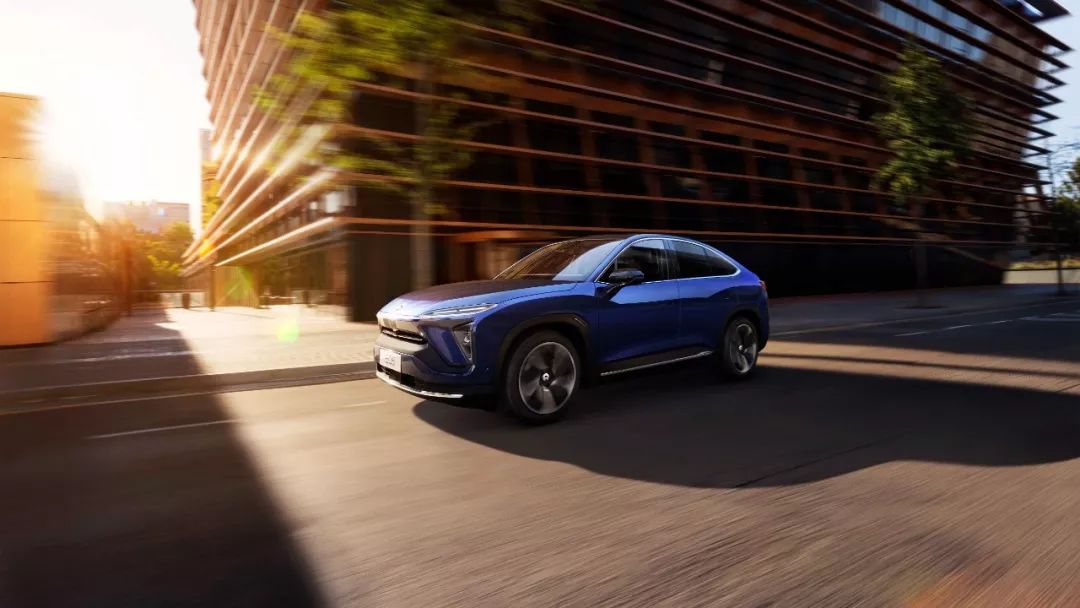
The EC6 is a model based on the ES6, so the basic parameters are basically the same as the ES6. Both have a sports version and a performance version.
The sports version uses front and rear dual 160 kW permanent magnet synchronous motors, with a hundred-kilometer acceleration time of 5.6 seconds, and there are two types of batteries to choose from: 70 kWh and 100 kWh, with corresponding NEDC ranges of 425 km and 605 km, respectively.
The performance version uses a power combination of front 160 kW permanent magnet synchronous motor and rear 240 kW AC asynchronous motor. The hundred-kilometer acceleration is 4.7 seconds, and there are also two types of batteries to choose from: 70 kWh and 100 kWh, with corresponding NEDC ranges of 435 km and 615 km, respectively.

It features a streamlined design with a vehicle drag coefficient of 0.27 Cd, and a sunroof size of 2.1 square meters.
So, the question is, can the EC6 bring sales growth to NIO?
It seems quite difficult.Li Bin did not announce the price of EC6 at the launch event, and he candidly told us the reason for not doing so: “Model Y is coming next year, and we don’t need to rush to announce the price. We want to leave some room for adjustments.”
Based on the current market prices for SUVs and SUV Coupes, Coupe models are generally slightly more expensive. The meaning of Coupe models is more to open up a new subdivision market based on SUVs.
In the first 11 months of 2019, the total sales of BMW X5 in the Chinese market were 31,893 units, ranking second in the mainstream large and medium-sized luxury SUV sales. Meanwhile, the total sales of BMW X6, which has a Coupe shape, was only 22% of X5, with 7151 units.
So can EC6 bring new sales to NIO? Yes, but the effect may not be particularly significant. What NIO needs is a larger incremental market.
This is NIO’s third card: the all-new ES8.
All-New ES8, the Updated Family Flagship
At the end of 2017, the ES8 made its debut with high-tech configurations and won the favor of many car owners. However, the ES6, which was released in 2018, has a highly overlapping position with the ES8, and users who didn’t need a third row of seats chose ES6 because of its more exquisite appearance and interior.
Therefore, after the delivery of ES6 in 2019, the sales of ES8 plummeted dramatically. Although NIO launched the ES6, it only took up most of ES8’s market share, and didn’t play a 1+1>2 effect as expected.
Now, the ES8 is back with two core changes: appearance and motor.
- Appearance
The appearance of the ES8 has been adjusted in many details, making it more exquisite.
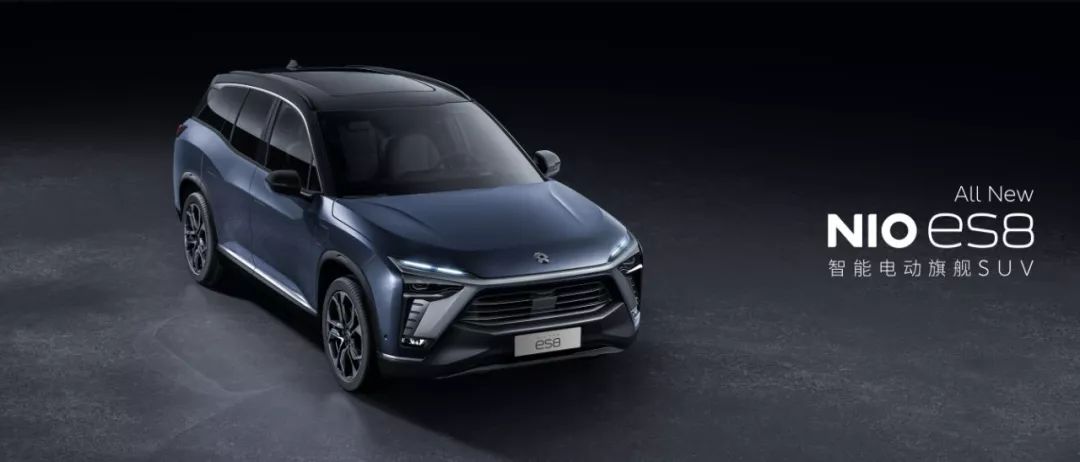
- Motor
The motor of the new ES8 has been significantly improved.
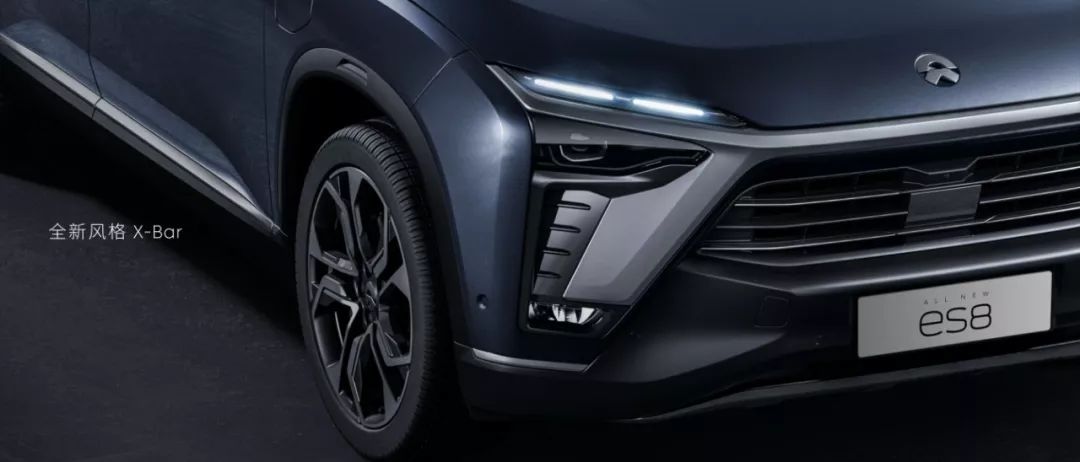
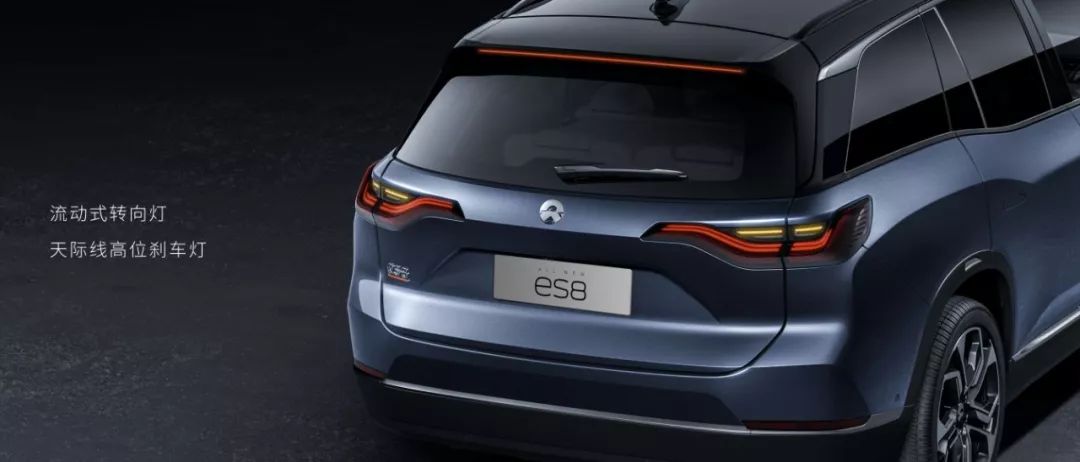
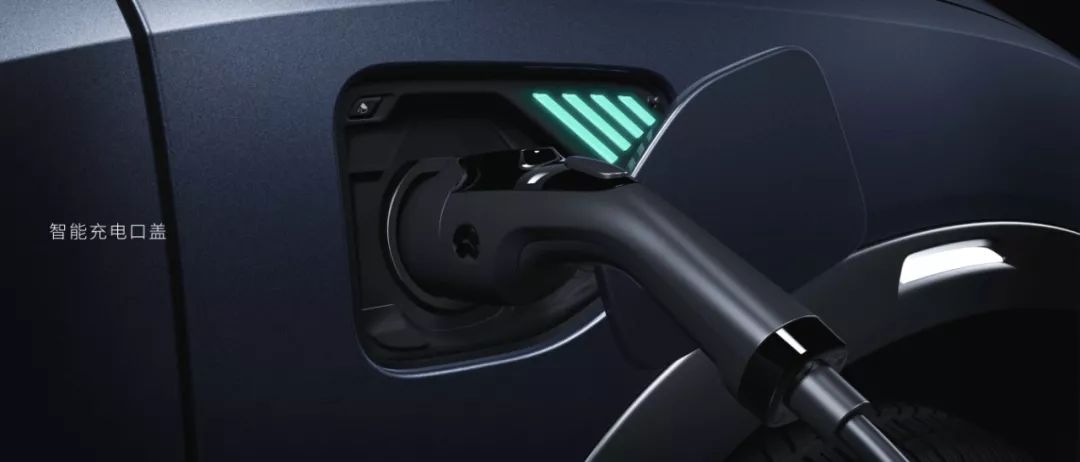
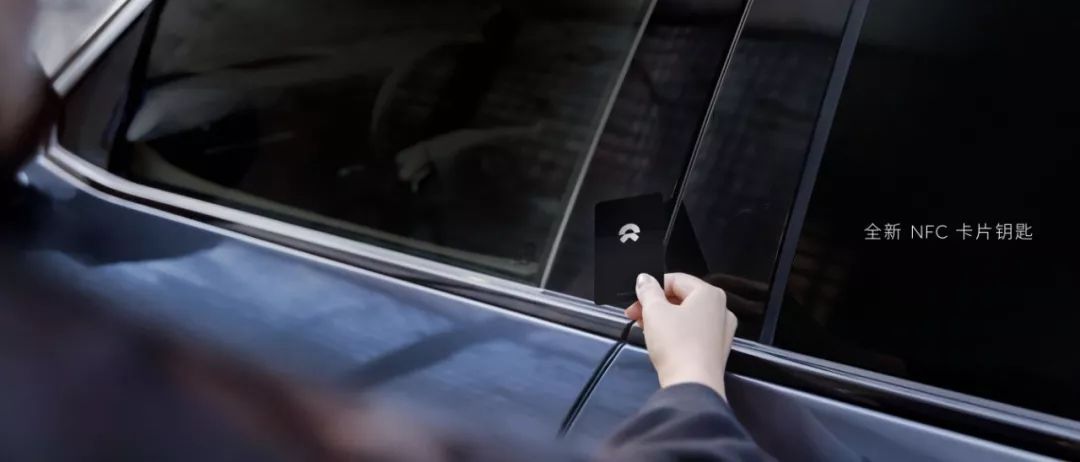
The interior has also been upgraded with an 11.3-inch high-definition and multitouch central control screen, the same as the ES6, while the instrument panel has been upgraded to 9.8 inches, making it narrower than the ES6’s 8.8 inches and providing a better visual experience. Moreover, Nomi’s display has been upgraded to an AMOLED screen with finer display effects.
In addition, the steering wheel, interior panel, buttons, and top are all upgraded to the same level as the ES6.
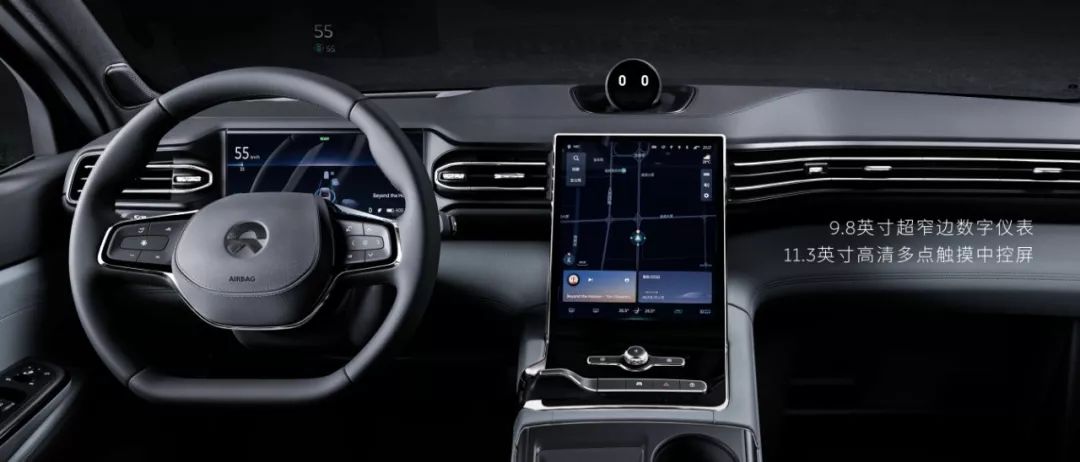
- Motor
In addition to the exterior and interior, the most core change to the ES8 is the replacement of the front 160 kW permanent magnet synchronous motor and 240 kW AC asynchronous motor, which is the same as the ES6.
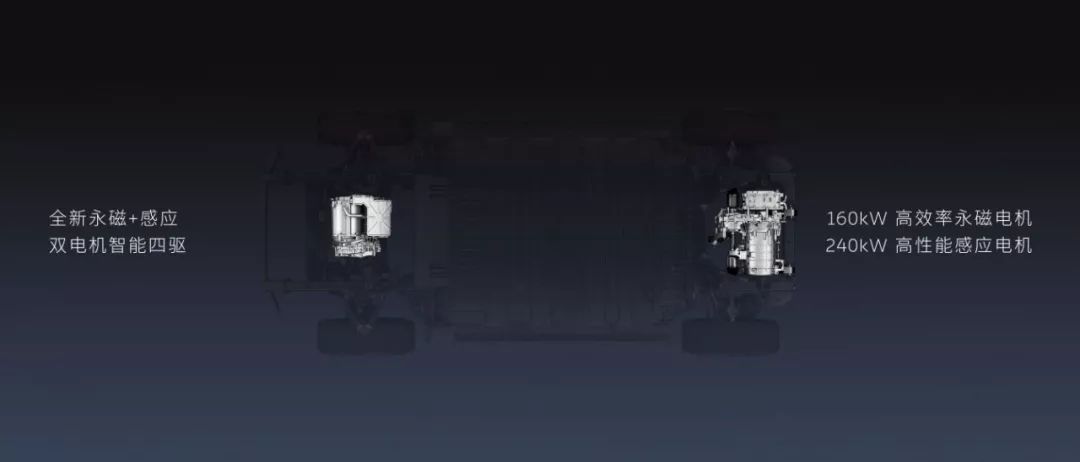
After replacing the powertrain, the ES8’s acceleration time from 0 to 100 km/h is 4.9 seconds, still within 5 seconds, and the range has been greatly improved. The new ES8 with a 70 kWh, 84 kWh, and 100 kWh battery has an NEDC range of 415 km, 485 km, and 580 km, respectively.
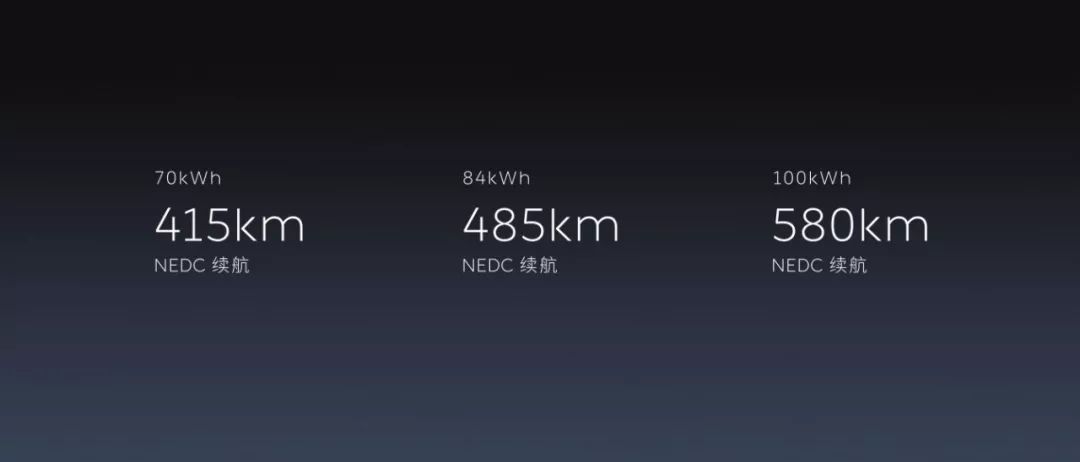
When the NEDC range exceeds 580 km, it means that the NIO ES8’s range has surpassed Tesla’s Model X Long Range model and has officially removed the “short range” label.The pre-subsidy price of the new ES8 is between 463,000 and 534,000 RMB.
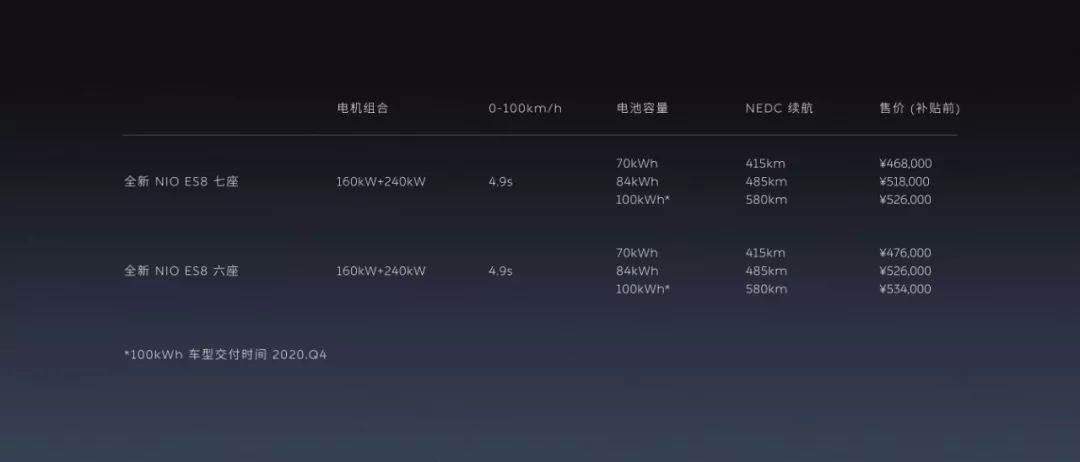
From its appearance to interior design, and to its new electric motors and batteries, the ES8 has reaffirmed its flagship status within the NIO family.
NIO’s Most Critical Year
If you ask me whether NIO’s mass production over the past two years has been successful or not, I think it has been successful. Not only has a high-end brand image been established, but also the highest sales volume has been achieved among emerging automakers.
In the first year, NIO spared no effort to build a high-end brand image among customers through its service system and NIO Houses, and equipped the ES8 with powerful hardware that resonated with its luxury car image.
In the second year, NIO firmly established its brand image among consumers by launching the more sophisticated ES6 and offering its complete range of energy replenishment services and service systems.
While many domestic automakers seek to capitalize on the opportunities created by electrification and digitization, the disappointing sales data of these models may suggest that they are more about self-amusement.
To date, NIO has sold more than 30,000 vehicles, far ahead of any other emerging automaker with an average price above RMB 300,000. Even compared with all domestic brands, NIO’s sales remain unique.
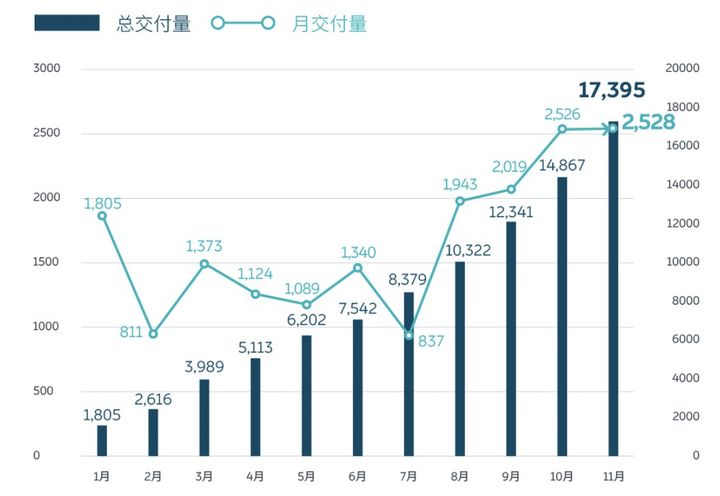
So why is this year considered NIO’s most critical year? Because in 2020, NIO needs to transition from financing its operations to supporting itself.
However, the current sales volume is not enough to sustain the company.
I believe many people are looking forward to NIO’s launch of the ES3, a smaller and more affordable model that caters to a wider range of consumers and expands the company’s market outreach.
However, in an interview after the NIO Day event, Li Bin, founder and CEO of NIO, said:
In terms of brand positioning, NIO will not produce cheaper electric cars. A brand’s bandwidth is limited. In the mainstream high-end market, where the price ranges from RMB 300,000 to 500,000, no Chinese brand has been established. We stepped in and succeeded. Our competitors have also launched similar products, but we can withstand the competition. In fact, I believe that when our founding team discussed which segment and price range to target at the end of 2014 and 2015, we realized that only by targeting mainstream high-end market could NIO succeed.
I hold a very positive view on the transformation of China’s automotive industry in the wave of intelligence and electrification, with opportunities in various segmented markets. Therefore, NIO will not produce cars that are particularly cheap, but we will use Battery as a service to lower the threshold for owning a NIO vehicle.
Battery as a service, in the words of Li Bin, means “on-demand upgrading”, and is a innovative change that NIO is making to the industry.
“Why do we talk about rechargeable, replaceable and upgradable? Currently, 76% of our vehicles are charged at home, and we have installed 28,000 third-party charging stations and mobile charging vehicles. NIO’s system is a comprehensive and all-scenario coverage system. Without this battery swapping system, the economic accounts of battery upgrading cannot be counted, and the financial model will also change. In this regard, we believe that we have found the key to popularizing the electric vehicle industry, which is quite interesting.”
“Various things will come to a point in 2020, and Battery as a service will become a new business. NIO’s transformative change to the industry is the four words ‘on-demand upgrading’.”
Battery as a service is a set of complete solutions, just like Software as a service. The idea is, to view the whole battery issue as a Pool. The biggest challenge for electric vehicles is that the life of the vehicle and the battery are not the same. If we view the battery as a Pool and upgrade it on demand, many things will fall into place.”
The brand new ES8, NIO’s third new EC6 model, and a 100 kWh battery are the three products that can bring NIO the highest sales growth and cost-effectiveness.
Perhaps this is NIO’s best solution.
This article is a translation by ChatGPT of a Chinese report from 42HOW. If you have any questions about it, please email bd@42how.com.
